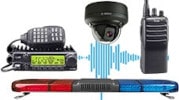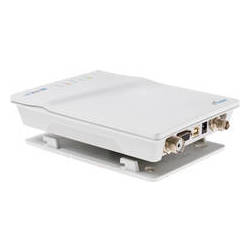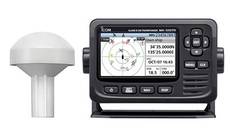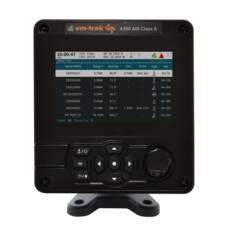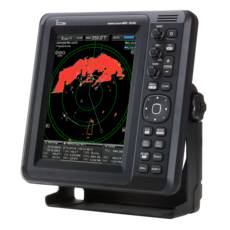AIS Transponder
- further categoriesAs in air transport, it is essential that the position and speed of vehicles can be accurately monitored in shipping. This is exactly what AIS transponders make possible, as they allow positioning and identification. Read more...
• Class B AIS Transponder
• Wide Angle Colour TFT LCD screen
• Output power: 2W
• Weight without GPS antenna: 700 g
• Easy to operate
• Real-time vessel trafic information
• Compatible Icom VHF marine radios: IC-M605EURO, IC-M506GE, IC-M330GE
• Supplied accessories: GPS antenna, DC power cable, mounting bracket kit, accessory connector
• IPX7 waterproof
• Silent mode
• Simplified navigation function (waypoint)
• Connectivity to NMEA 2000 network/NMEA-0183
• Standard inland waterway AIS Class B transponder
• For fishing vessels, motor and sailing boats
• Can be operated from both 12V and 24V
• 5 LEDs for operation indication
• USB interface for PC connection
• RS-232 and RS-422 interfaces on the unit
• Price includes power cable, USB cable and software
• Link2AIS software is supplied as standard
• Standard inland waterway AIS Class B transponder
• For fishing vessels, motor and sailing boats
• Can be operated from both 12V and 24V
• 5 LEDs for operation indication
• USB interface for PC connection
• RS-232 and RS-422 interfaces on the unit
• Price includes power cable, USB cable and software
• Link2AIS software is supplied as standard
• 36 NM Range Observation with 4 kW Output Radome Scanner
• Simplified ARPA (Automatic Radar Plotting Aids) Function - External bearing, speed and position data required
• DSC (Digital Selective Calling) Information Function - External bearing, position and DSC data required
• AIS (Automatic Identification System) Overlay Function - External bearing, position and AIS data required
• Display type:10.4-inch Color TFT LCD
• TLL (Target Latitude Longitude) Function - External bearing and position data required
• True Trail Function - External bearing and position data required
• Scanner Unit: IPX6 (Powerful jet water protection)
• Scanner Unit Frequency: 9410 MHz ±30 MHz
• Scanner Unit Supplied system cable: 15 m
• Preheat time: 90 seconds
• Power supply: 10.2–42 V DC
• Inland and SOLAS Class A certification
• Integrated high-visibility colour display with intuitive controls
• Compact, robust (IPx7) waterproof housing
• Dual pilot plug and alarm relay output
• Silent mode and voyage data recording
• Flexible connectivity: multiple NMEA 0183 & NMEA 2000 ports, Wi-Fi (client or access point mode) for wireless connection to PCs or tablets, and optional USB interface
• Seamless compatibility with systems such as Periskal Inland ECDIS
• The VHF marine antenna in not included with the device and must be purchased separately.
The transponder transmits both static and dynamic data: the former category includes, for example, the vessel's ID, name and call sign, while the dynamic data includes position, speed, heading and voyage data (dive, destination, estimated time of arrival, deliver). The AIS beacon also transmits data on the vessel's voyage: destination, planned arrival, loaded dive, etc.
This allows all vessels within range to have a clear and real-time picture of other traffic and, of course, to monitor traffic at the base station. The AIS transponder has its own display, but the data can also be accessed on a computer using the appropriate application.
Which vessels are required to use an AIS transponder?
A vessel equipped with a Nauticast or ICOM AIS transponder, as well as a shore-based inland AIS base station, can display vessels within range that are transmitting identification signals, so that the vessel operator can have a continuous overview of the water traffic in the area, either on the AIS display or on an ECDIS display. It is important to know that the current regulations on the Hungarian section of the Danube require certain navigational facilities to use AIS.
Any river vessel without a transponder or with a faulty device is therefore not allowed to operate. In the latter case, you can use the portable inland AIS transponder available in the DND Telecom webshop, which you can buy or rent from our company. The mobile inland AIS transponder is available in 12, 24 and 230V versions, and the waterproof case ensures safety. The built-in battery provides up to an hour of operation and the GPS and VHF antenna are standard. The portable transponder is also capable of location tracking, real-time traffic monitoring and lock management, just like the installed devices.
What is the difference between a Class A and a Class B AIS transponder?
Class A AIS devices
Class A AIS transponders are a mandatory accessory above a certain vessel size, just like a VHF marine radio. This applies mainly to vessels for industrial use that are involved in the transport of cargo, goods or passengers. Since time and position are key factors in traffic data, Class A transponders also include a synchronised internal clock and GPS.
Class B AIS devices
While Class A devices are used in industrial shipping, the smaller, simpler Class B transponders are "in service" (but not mandatory) on recreational vessels. A Nauticast or ICOM branded AIS transponder, which like its Class A counterpart also has a VHF and GPS antenna, can be a great help on a fishing, sailing or motor boat. Smaller, cheaper devices typically include a USB port, so they can be easily connected to a laptop or computer.
Class B transponders can receive both Class A and Class B AIS signals, increasing the safety of navigation. A display is available on a number of models, showing potentially dangerous vessels in a different colour (typically red). The displays are designed to be easily and clearly readable both day and night.
Both Class A and Class B devices are subject to radio authorisation and in some cases may require programming by the seller!
What frequency do AIS transponders operate on?
The DND Telecom webshop offers AIS transponders from two world-renowned manufacturers, Nauticast and ICOM. According to the Nauticast brand, their AIS transponder uses a frequency band between 156 and 163 MHz. The AIS device manufactured by ICOM uses the band from 161.500 MHz to 162.025 MHz.
What data do AIS transponders transmit?
The AIS transponder on board our vessel automatically receives information transmitted by other vessels and base stations equipped with AIS devices, while transmitting static and dynamic information from our own vessel. Why use an AIS transponder? It can be used to detect smaller vessels and buoys at sea that are difficult to detect with maritime radar. This type of equipment only increases your own safety, whether you are on a river or at sea.
With the AIS transponder screen switched to day mode, you can clearly see your own and other vessels' positions. Potentially dangerous vessels are shown in red and friendly vessels in yellow. The day mode display is clearly visible in direct sunlight, while the night mode provides good readability in the dark. But the screen can also be used for navigation.
This function takes you to a specific point. But you can also program up to 100 favourite destinations. Simply set a target or another AIS transponder on the display and you're on your way. If you are looking for a reliable AIS device, choose Nauticast or ICOM AIS transponders.
AIS transponders are compatible with other marine equipment such as radar and GPS?
The RS232/RS422 interfaces (NMEA 0183) and the pilot port guarantee seamless integration with all other on-board systems. Many of the electronic equipment used at sea, such as AIS transponders, chart plotters, DSC radios, have a built-in Global Navigation Satellite Systems (GNSS) module, also known as a GPS receiver. This is the United States' global positioning system, but these devices often support other GNSS systems such as Galileo in Europe and GLONASS in Russia. Be aware that some AIS transponders can only be configured via computer. You will therefore need a wifi connection and a USB cable. But today's modern transponders can be configured not only on a computer, but also on tablets and smartphones.
What accessories are available for AIS transponders, such as antennas or accessories?
As mentioned earlier, RS232/RS422 interfaces (NMEA 0183) ensure seamless integration with on-board systems. NMEA, National Marine Electronics Association, is an acronym for the US-based marine electronics trade association that sets standards for the exchange of information between marine communications devices. One of the standards of this organisation is NMEA 0183, which is the basis for exchanging information between marine communication devices such as sonars, wind speed indicators, gyro compasses, autopilots, GPS receivers and many other types of instruments.
But you can also connect a VHF and GPS antenna to the AIS transponder. The first antenna requires a BNC connector, the second version requires a TNC socket. This is mainly necessary for the first generation of AIS transponders, which use external VHF and GPS antennas. These devices are typically connected via coaxial cable to antennas mounted outside the cabin. Today, the most modern AIS transponders have built-in GPS receivers and antennas, meaning there is no need to connect them as external units.
Contact us with confidence: we will provide you with the ideal AIS transponder, help you obtain the permits and of course also help you with programming and installation.

